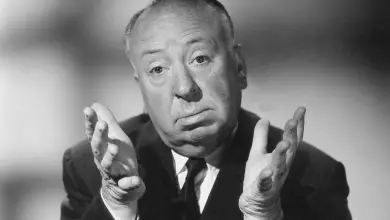What is James Bond’s MBTI Type Of Personality?

James Bond, the suave and fearless spy, has been a beloved character for generations. As fans, we are drawn to his charismatic personality and thrilling adventures. But have you ever wondered about the underlying traits that make up James Bond’s Myers-Briggs personality type? In this article, we will delve into the world of the Myers-Briggs Type Indicator (MBTI) and explore the fascinating question: What is James Bond’s Myers-Briggs type? By understanding the key characteristics of the ESTP personality type, we can gain further insight into Bond’s behavior, decision-making processes, and what makes him such an iconic figure.
Key Takeaways
- James Bond’s Myers-Briggs type is ESTP (Extraverted, Sensing, Thinking, Perceiving), which aligns with his charismatic, action-oriented, and adaptable personality.
- The ESTP personality type is known as “The Entrepreneur” and is shared by other famous fictional characters such as Indiana Jones and Tony Stark (Iron Man).
- While the core preferences of an ESTP remain relatively stable, individuals within this type can exhibit variations in their level of risk-taking, introversion/extroversion, and emotional intelligence.
- Understanding the ESTP type provides a framework for exploring the complexities of James Bond’s character and enhances our appreciation for his unique traits and abilities.
James Bond, the iconic fictional character created by Ian Fleming, has captivated audiences for decades with his charm, wit, and action-packed adventures. Known for his fearless nature and suave demeanor, many fans have wondered about the personality traits that define this enigmatic spy. In this article, we will explore the Myers-Briggs Type Indicator (MBTI) and delve into the question: What is James Bond’s Myers-Briggs type?
Understanding the Myers-Briggs Type Indicator (MBTI)
Before we delve into James Bond’s personality type, let’s first understand the Myers-Briggs Type Indicator. Developed by Katharine Cook Briggs and her daughter Isabel Briggs Myers, the MBTI is a widely used psychological tool that assesses personality based on four dichotomies:
- Extraversion (E) vs. Introversion (I): This dimension determines how individuals gain energy. Extraverts are outgoing and energized by social interactions, while introverts tend to be more reserved and recharge through solitude.
- Sensing (S) vs. Intuition (N): This dimension reflects how individuals perceive information. Sensors rely on their five senses and focus on practical details, while intuitive individuals rely on patterns, connections, and future possibilities.
- Thinking (T) vs. Feeling (F): This dimension examines how individuals make decisions. Thinkers prioritize logic and rationality, whereas feelers consider emotions and values.
- Judging (J) vs. Perceiving (P): This dimension explores how individuals approach the outside world. Judgers prefer structure, planning, and closure, while perceivers are more adaptable and open-ended.
By combining these four dimensions, the MBTI categorizes individuals into 16 different personality types, each represented by a unique combination of letters.
Analyzing James Bond’s Personality Traits
To determine James Bond’s Myers-Briggs type, we can analyze his behavior, characteristics, and preferences exhibited throughout the James Bond film series. While there may be variations among different interpretations of the character, we can make an assessment based on the general portrayal of James Bond.
Extraversion (E) vs. Introversion (I): James Bond is undoubtedly an extravert. He thrives in social settings, effortlessly engaging with people and adapting to different social contexts. His ability to charm and connect with others is a defining trait of his character.
Sensing (S) vs. Intuition (N): James Bond leans more toward sensing. He pays attention to concrete details, relying on his senses to gather information and make quick decisions. Whether it’s noticing subtle cues or analyzing his surroundings, Bond’s focus on the present moment is a key aspect of his spy work.
Thinking (T) vs. Feeling (F): Bond tends to exhibit more thinking traits. He is analytical, logical, and often makes decisions based on objective factors such as strategic advantage and efficiency. While he can display emotional depth and empathy at times, Bond’s overall approach is predominantly driven by rationality.
Judging (J) vs. Perceiving (P): James Bond aligns with the perceiving dimension. He embraces spontaneity, adapts to changing circumstances, and is comfortable with ambiguity. Bond’s resourcefulness and ability to think on his feet exemplify the perceiver mindset.
Based on this analysis, James Bond’s Myers-Briggs type can be categorized as ESTP (Extraverted, Sensing, Thinking, Perceiving).
The ESTP Personality Type
The ESTP personality type is often referred to as “The Entrepreneur.” Individuals with this type are known for their outgoing nature, practicality, and adaptability. Let’s take a closer look at the characteristics that align with James Bond’s portrayal:
- Charismatic and Sociable: Like Bond, ESTPs excel in social situations. They possess a natural charm that allows them to effortlessly connect with others and build rapport.
- Action-Oriented: ESTPs are known for their preference for action and immediate results. Bond’s daring and fearless nature perfectly exemplify this aspect of the ESTP type.
- Situational Awareness: ESTPs have a keen eye for detail and a strong awareness of their surroundings. Bond’s ability to spot even the slightest changes in his environment showcases this trait.
- Risk-Taking: ESTPs are comfortable taking risks and embracing uncertainty. Bond’s willingness to undertake dangerous missions and make split-second decisions demonstrates his affinity for calculated risks.
- Adaptable: ESTPs thrive in dynamic environments and can quickly adapt to new situations. Bond’s ability to navigate various settings and adjust his approach accordingly is a defining characteristic of his personality.
It’s important to note that while James Bond embodies the ESTP type, individual variations within the type can exist, allowing for unique character traits and behavior.
FAQ: James Bond’s Myers-Briggs Type
- What other famous fictional characters share the ESTP Myers-Briggs type?
While James Bond is an iconic character with an ESTP personality type, there are several other famous fictional characters who also exhibit similar traits. One notable example is Indiana Jones, the adventurous archaeologist known for his daring escapades and quick thinking. Like Bond, Indiana Jones thrives in high-risk situations, displays charisma, and adapts to unexpected challenges. Another character with an ESTP type is Tony Stark, also known as Iron Man. Stark’s boldness, love for action, and ability to adapt his technology showcase the typical traits of an ESTP.
- Can an ESTP be introverted rather than extraverted?
While the ESTP type is primarily associated with extraversion, it is essential to remember that individuals can exhibit varying degrees of extraversion and introversion within a type. Although it is less common, there can be ESTPs who lean more towards introversion. These individuals may still possess the core characteristics of the ESTP type, such as their action-oriented nature, practicality, and adaptability, but may also value their solitude and require more time alone to recharge their energy.
- Are all spies likely to be ESTPs?
While the ESTP personality type aligns well with the characteristics often associated with spies, it’s important to remember that the Myers-Briggs Type Indicator provides a framework for understanding personality preferences, but it doesn’t determine an individual’s career or abilities. While some spies may exhibit ESTP traits, others may have different personality types. The choice of a career, including espionage, depends on various factors such as skills, interests, and personal motivations.
- Do all ESTPs possess the same level of risk-taking tendencies as James Bond?
While ESTPs are generally known for their willingness to take risks, the degree to which individuals embrace risk can vary. Some ESTPs may naturally gravitate towards daring and high-stakes situations, much like James Bond, while others may exhibit a more moderate approach. Factors such as upbringing, personal experiences, and individual preferences can influence an ESTP’s level of risk-taking behavior.
- Can an ESTP be emotional and empathetic?
While the ESTP type is predominantly associated with logical decision-making, it doesn’t mean that individuals of this type lack emotional depth or empathy. ESTPs are capable of displaying empathy and understanding emotions, especially in specific contexts or situations where they deem it important. While their decision-making process is primarily driven by objective factors, ESTPs can exhibit emotional intelligence when needed, showing care and concern for others.
- How do ESTPs handle stressful situations?
ESTPs typically handle stressful situations with a calm and composed demeanor. Their ability to adapt and think on their feet enables them to navigate challenges effectively. ESTPs are known for their resourcefulness and ability to find practical solutions in high-pressure environments. They often rely on their quick thinking and situational awareness to assess the best course of action, minimizing stress and achieving their goals efficiently.
- Can an ESTP be organized and structured in their personal life?
While ESTPs tend to embrace flexibility and spontaneity, it is possible for them to incorporate organization and structure into their personal lives. Although they may not naturally gravitate towards detailed planning, some ESTPs recognize the benefits of having a structured routine and organized environment. They may use strategies such as setting goals, creating to-do lists, or using technology to maintain a sense of order and efficiency in their personal lives.
- Are there any disadvantages to having an ESTP personality type?
While each personality type has its strengths and weaknesses, it is important to note that the disadvantages of an ESTP personality type are subjective and depend on individual perspectives. Some potential challenges for ESTPs may include a tendency to take impulsive risks, difficulty with long-term planning, and a preference for immediate gratification. Additionally, they may face challenges in environments that require strict adherence to rules or in situations that demand extensive introspection or emotional depth.
- Can an ESTP change their personality type over time?
The core preferences that make up one’s personality type, as identified by the Myers-Briggs Type Indicator, are considered to be relatively stable throughout adulthood. However, it is important to remember that individuals can develop and enhance skills and behaviors associated with different personality dimensions. While an ESTP’s core preferences are unlikely to change significantly, they can learn to adapt and incorporate traits from other personality types, depending on their life experiences and personal growth.
- What other personality types are compatible with ESTPs?
ESTPs are often drawn to individuals who can complement their outgoing and adventurous nature. They may find compatibility with personality types such as ESFP (Extraverted, Sensing, Feeling, Perceiving) and ENTP (Extraverted, Intuitive, Thinking, Perceiving). These types share common traits with ESTPs, such as an appreciation for spontaneity, adaptability, and a preference for practicality. However, it’s important to remember that compatibility in relationships is multifaceted and extends beyond personality types, considering individual values, interests, and communication styles.
Conclusion
In the world of fictional characters, James Bond stands out as an archetype of charm, adventure, and calculated risk-taking. Through the lens of the Myers-Briggs Type Indicator, we have identified James Bond’s personality type as ESTP. This designation captures his extraverted nature, his reliance on sensing to navigate his surroundings, his thinking-based decision-making, and his adaptable and spontaneous approach to life. By understanding the ESTP type and its characteristics, we gain a deeper appreciation for the complexity and allure of James Bond’s character.
Exploring the Myers-Briggs personality types of fictional characters adds a new dimension to our understanding and enjoyment of their stories. While James Bond’s ESTP type is just one piece of the puzzle that makes him such an iconic figure, it provides insights into his behavior and sheds light on why audiences have been captivated by his adventures for decades. Whether you relate to the ESTP type or resonate with a different personality type, the Myers-Briggs framework offers a valuable tool for exploring the diverse range of human personalities and the rich tapestry of characters that inhabit our favorite stories.









